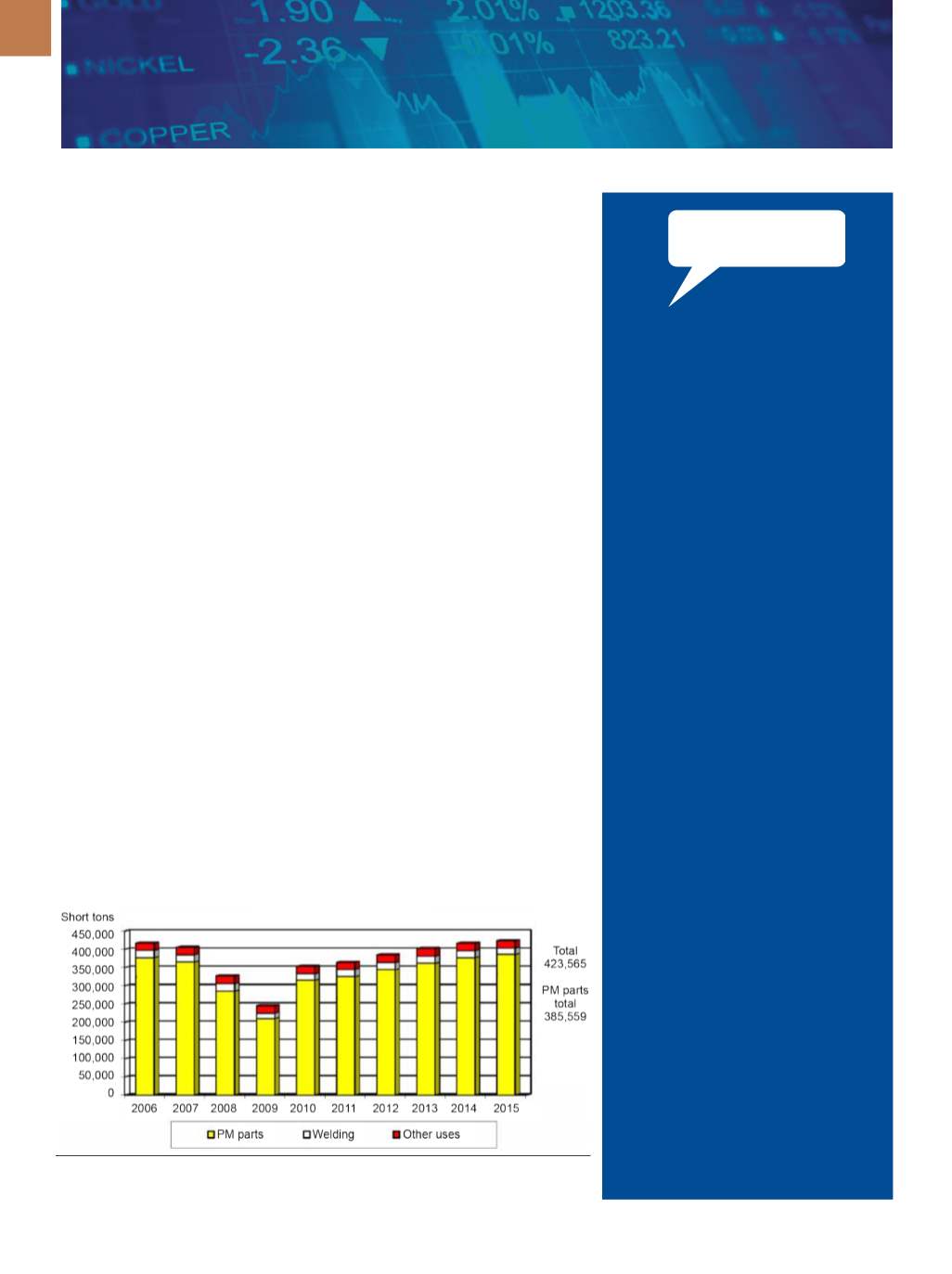

A D V A N C E D M A T E R I A L S & P R O C E S S E S | S E P T E M B E R 2 0 1 6
6
MARKET SPOTLIGHT
FEEDBACK
POWDER METALLURGY INDUSTRY SEES STEADY GROWTH
According to analysis from the
Metal Powder Industries Federation,
Princeton, N.J., the powder metallurgy
(PM) industry will see modest growth
in 2016, following a healthy 2015. Con-
ventional press-and-sinter companies
and metal powder producers report
good business levels, as do companies
involved with metal injection molding,
metal additive manufacturing (MAM),
and hot isostatic pressing. However,
refractory metal demand has continued
to decline.
Developing metal powders for
MAM via gas atomization is a new
trend likely to be accelerated by most
leading powder makers, say analysts.
Meanwhile, successful use in the aero-
space and medical sectors continues
to pave the way for future applications.
Although the MAM market currently
remains small and limited to about
15 commercially available materials,
it offers exciting promise for PM in the
years ahead.
Another trend is the growing
need for precision machining of PM
parts. Powder suppliers are introduc-
ing high-performance lubricants and
additives for the press-and-sinter PM
The ASMMaterials Education Foundation supports
educators through a free materials science work-
shop called ASMMaterials Camp–Teachers. This
weeklong lab experience shows educators how to
use applied engineering techniques in their class-
rooms. Several 2016 camps have already taken
place withmore scheduled throughout the year.
Below are a few recent comments.
AWESOMESAUCE
I cannot overstate how awesome this
camp was on a multitude of levels. I could
have gone for a week and a half just so
we could get to and finish composites.
There was so much material and so
many ideas presented that it was almost
overwhelming. The instructors did a great
job of explaining the material and how to
present it to students.
Justin Orlando
REFRESHING WORKSHOP
The instructors were incredibly knowl-
edgeable and accommodating. They
went out of their way to help everyone
understand the material, feel comfort-
able enough to implement it, andmade
adjustments to fit my schedule. I conduct
professional workshops myself and am
pretty demanding about my expecta-
tions for professional development. As a
seasoned educator, I often find that other
programs lack appropriate materials or
presentation style. Not so with the ASM
workshop. Instead of my usual critical
attitude, I found this workshop to be a
refreshing example of how one should be
conducted—with pertinent lessons, excel-
lent instructors, and practical materials to
implement.
Kathleen Dwyer
We welcome all comments
and suggestions. Send letters to
frances.richards@asminternational.org.
market. Further, the aluminum pow-
der market for PM parts applications is
undergoing a new surge as automotive
designers seek lighter weight parts. The
use of higher-strength aluminum alloys
with metal matrix composites is experi-
encing renewed interest to reduce mass
and provide improved properties, and
this focus is currently a project within
the Lightweight Innovations for Tomor-
row consortium.
While MAM hype has moderated,
an estimated 50-100 companies and
organizations are actively developing
programs that use metal powders. To
this end, machine sales are surging, but
most MAM installations produce parts in
short runs of up to 100 units. The aero-
space andmedical industries are leading
adopters of this developing technology.
So far, the main MAM powder materials
include 316 and 17-4 PH stainless steel,
cobalt chrome, and titanium. Other
materials used in MAM include Inconel
625 and 718 alloys, platinum, molybde-
num, and tungsten. Most companies in
the PM industry view MAM as a comple-
mentary technology and an opportunity
to enter a new technology sector.
For more information, visit mpif.org.
North American Iron Powder Shipments
Courtesy of Metal Powder Industries Federation.


















